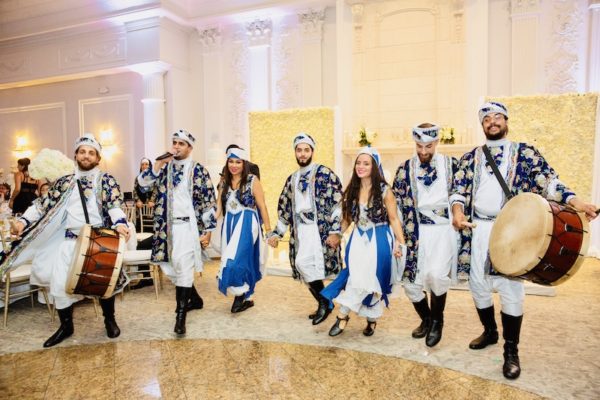
Dabka performances are a great addition to your special event. In a place like New Hampshire, these performances are very special. Due to the amazing culture found in this state, every aspect of these performances are unique and meaningful. Here are five experiences to expect from a dabka group in New Hampshire.
Culture
New Hampshire has a large population of Arab people. In many of the biggest cities, immigrants have come from different countries throughout the Levantine region, including Palestine, Jordan, Syria, Iraq, and Lebanon. The largest portion of the Arab population in New Hampshire live in Hillsborough County. Cities in this county such as Manchester, Nashua, and Merrimack have tens of thousands of Arabic immigrants. These people have brought their language, culture, and ancestral folklore to New Hampshire, and continue to celebrate it every day. Dabka groups in NH bring this ancient culture to every performance.
Authenticity
Dabke groups love to celebrate. They call every event that they perform at Mahrajan, which is the Arabic word for celebration. They work to make their performance very family-oriented. Dabka dancers begin every event with a zaffa entrance. Zaffe in New Hampshire is seen annually at the Mahrajan Middle Eastern Festival. Every year, in Manchester, NH, this festival is held to celebrate the Arabic culture. It is accompanied by delicious Lebanese food, and ancient Arabic folk dance. The music and dance seen at this festival is brought to every New Hampshire dabke event.
Dress
One of the most important components of a dabka performance is the dress. Traditional dabke clothing is worn at every performance. Since the majority of the Arabic population in New Hampshire is from Lebanon, this is the most popular style of dress seen at events. Traditional Lebanese clothes consist of various colorful patterns. Women are seen wearing embroidered long dresses, decorated with bright colors and paired with elegant jewelry. The men tend to wear simple shirts with trousers, matched with leather shoes and comparatively wide belts. To complete the outfit, both men and women typically wear either completely white or black and white scarves on their heads. These scarves are traditionally called “kofiyeeh”. This kind of dress is very authentic, and is one of the best things about a dabke performance.
Dance
Dabke dance has been passed down for many centuries. Many immigrants throughout New Hampshire were taught this dance early in their lives. These immigrants come from Bilad-Alsham, which consists of Palestine, Jordan, Syria, and Lebanon. In Bilad-Alsham, the people are taught from a young age the history of this dance. In the ancient villages, the people would often gather together to build homes. It wasn’t always the most entertaining task, so they created a rhythmic dance out of it. The word “dabke” roughly translates to “stamping of the feet”. A common song danced to at dabke performances in NH is Ala Dal Ouna, which translates to “let’s go and help”. This song is commonly chosen because it represents the times when the villagers would come together to help each other. This dance carries the history and daily lives of the people of this culture.
Meaning
With every dabke performance comes a great meaning. Because of the large population throughout the state, dabka groups in New Hampshire always bring this meaning to their performances. The history of the dance is a story, but the story has a great impact on the Arabic culture. It represents the importance of community to a group of people. In order for the dance to be complete, the dabke group must cooperate together to create solidarity, just like their ancestors did. For the people of this culture, dabke represents struggle, and the sense of community it creates symbolizes life and love. This meaning found in the dance is a representation of the culture, and it creates a great performance for your event.

